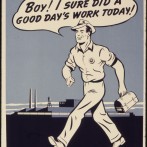The Whole Enchilada
According to Woody Allen, “Showing up is 80% of life and success.” In many cases, I believe that…but not in all. When it comes to work and business, simply showing up doesn’t usually get the job done. It’s a great start, but the more important question to ask is, “how much of who we are gets to show up?” As a business leader, professional advisor and former employee, I’ve observed the many ways in which people ‘show up’ at work. In fact, I adopted my own retinue of ‘showing up’ personae over the years. These personae represented parts of the whole, but rarely the whole itself. Depending on the work environment, certain aspects got to show up and certain aspects were safeguarded outside the company walls. The whole enchilada was rarely made available. That’s a problem. Why? Because the extraordinary, the remarkable, the above and beyond, even the really good, is a product of the whole enchilada. A plain flour tortilla is not extraordinary. How fully and completely any given person is showing up at work matters. In fact, it’s huge. Leadership cannot survey their employees with the question “hey, how much of you is showing up here?” And, oftentimes, employee’s couldn’t answer because they don’t know. If, however, your people are bored, tired, angry, disconnected, apathetic, disillusioned, uninspired, disengaged—there’s your answer. How much is showing up? Only that which keeps their job in place. The flour tortilla. Companies and leadership have it within their power to invite the whole person to the party. It’s just that so few do. Either because they don’t know how, they don’t know the whole is missing or they don’t care. For those forward-thinking leaders who get it, who recognize the power of the whole person showing up at work—those leaders possess the ideal mindset to catalyze remarkable things. For leaders who state categorically that it’s the sole job of the employee to inspire themselves—well, I hope they’re satisfied with flour tortillas. Tired of your people just going through the motions? Interested in energizing and activating your workplace? It all begins at the leadership level. The leader leads the way. Discover 6 Steps You Can Take Today! 6 Steps You Can Take Today to Jump Start Your Company Culture...
Read More




